There is a common agreement between owners of PSSM horses and the researchers: the more turnout and free movement the better for horses with muscular diseases (and not only for them). After we learned about PSSM it became clear to us that we had to change the way we kept Lola (paddock stall with either field or sand turnout every morning for a few hours). She was on her own on that paddock most of the time, but other horses stayed next to her. But its not so easy finding the perfect stable… how did we do that?
Stef and I did a lot of research and compiled a list of criteria – the stable checker with the aspects that seemed most relevant to us. We compared potential new stables to our current one. You can find the template as download below.
Our priorities:
- Trustworthy staff
- All day turnout
- Small herd
- Flat to hilly paddock and fields with grass (not too steep)
- Hay ad libitum
- Option to provide individual food and supplements
- Outdoor or indoor riding arena with good ground material
- Hacking should be possible/allowed
- Distance/price/opening hours
We invested a few weekends and drove to all stables on our shortlist to check them out personally. I must admit – we started the project in January – which in Austria usually means you see a stable at worst possible weather conditions, some with snow and ice, some in pouring rain, fighting through ankle-deep mud. No bright sunshine and lush pastures but fair as in all cases the conditions were similarly awful.
We had a few “No thanks” candidates, for example a great facility with multiple arenas, beautifully located but desolate, not well maintained, you could see that no investment had been made in years. Rain was dripping through the roof, the fences broken and badly wired together with a straw string repaired, how good were the chances they would properly take care of our horse?
On another occasion we visited a self-proclaimed „Horseman“ who has built a new stable for his own horses and a few selected additional ones which would fit into his herd. His concept sounded reasonable (always outside during the day, protected shelter, hay, small group of horses). He came to our stable to visit Lola and I am still impressed with how thoroughly he was selecting his group of horses (or horse people – who knows). Anyway, Lola showed her best side and this time she received a clear “No thanks” from the Horseman claiming that she is too dominant for his group of retirees. His stable would have been great – for horses (not so much for the two-legged beings). When I asked where the toilets were at his place, he replied, “a true horseman does not need this” and waived in the direction of the neighboring corn field. We added one more item to our priority list:
- Toilet
Next, we visited an active stable. Very well designed, impressive also from a technical perspective (automated feeding and such) but unfortunately too far away and with a waiting list so long that you might be faster getting tickets for the Austrian new year’s concert than a place in this stable. And the herd was quite big, 30 horses which could mean additional stress for a horse that is not so used to direct exposure to herd life.
When we drove to visit the foundations of a brand-new stable in the beautiful Vienna woods on a very cold winter day, we felt after the first meeting with the owner family that we could be at the right place this time. They were looking for a mare to complete a small herd of six female horses and so in April 2019, Lola moved to her new home after the construction of the stable had been finished.
Fort wo years now, Lola is living with a consistent group of six mares at the Waldhof Grasel in Gutental. In the majority of days, she is out for 22 hs in a mud free paddock with hay at her disposal. In the morning, the horses return to their stables (individual ones) for feeding while the paddock is being cleaned. After that they go back outside and in summer, they stay in the field all day (after gradually extending duration on fresh grass). We had a few challenges in the beginning with herd integration (kicks and bites) but after Lola settled for the lowest place in the hierarchy, everything calmed down. The other mares seem to really care for her and tolerate her sometimes weird behavior. Since the move, Lola is so much more relaxed and happier with the whole world and more energetic when it comes to riding that I believe this was one of the best decisions to make a transition to a more natural, horse friendly way of keeping her in this herd.
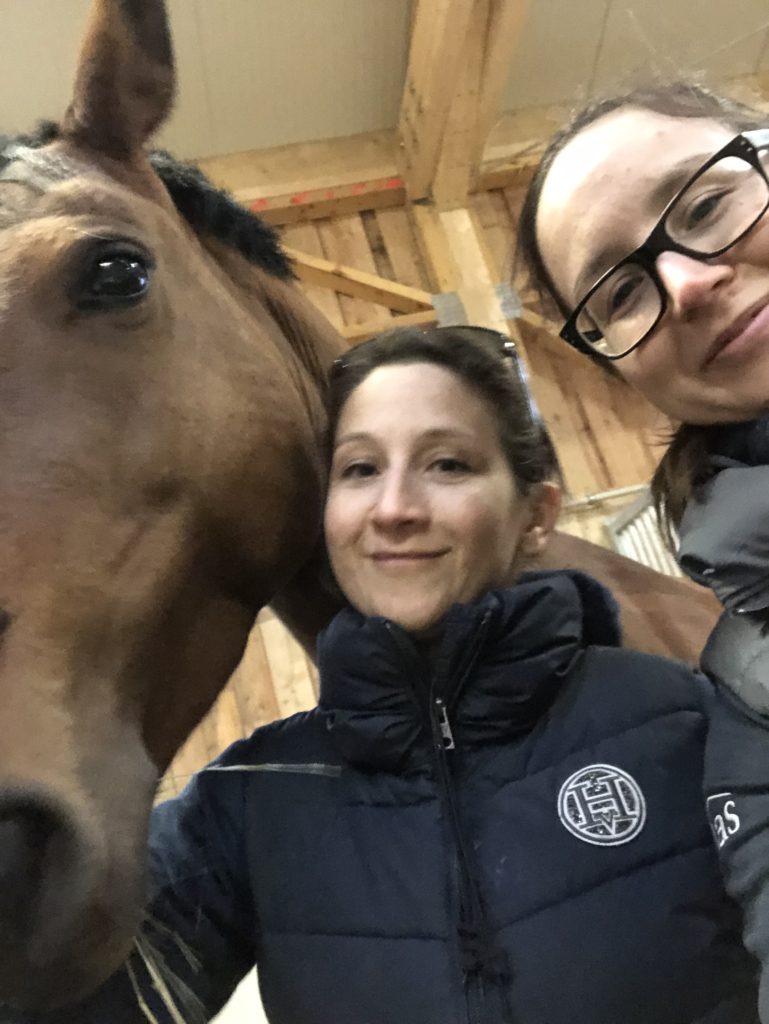
Im neuen Stall angekommen 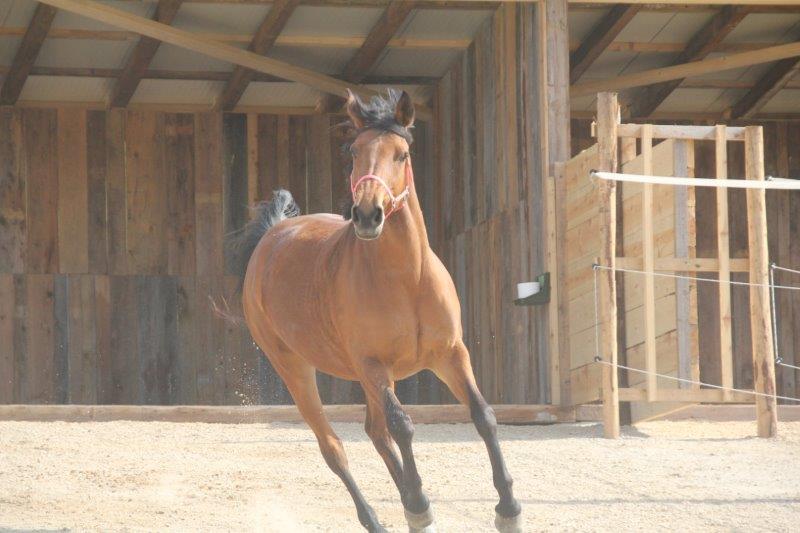
Lola erkundet den Paddock 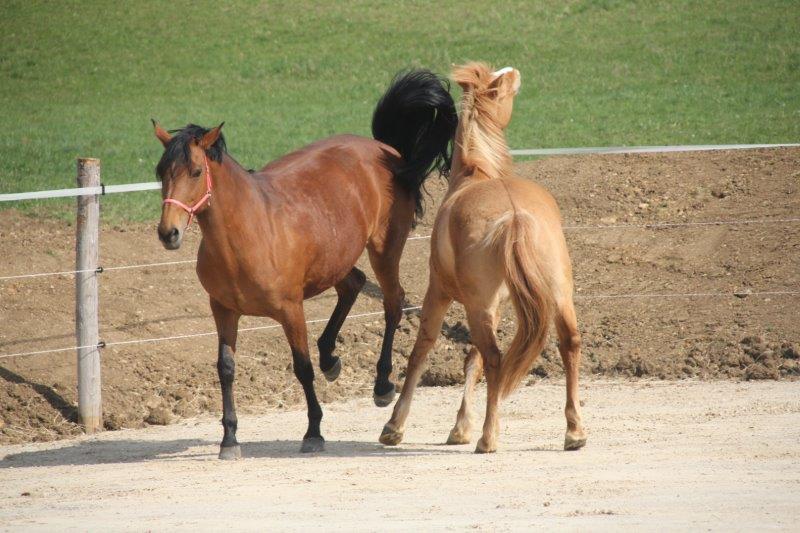
Begegnung mit der Herdenchefin 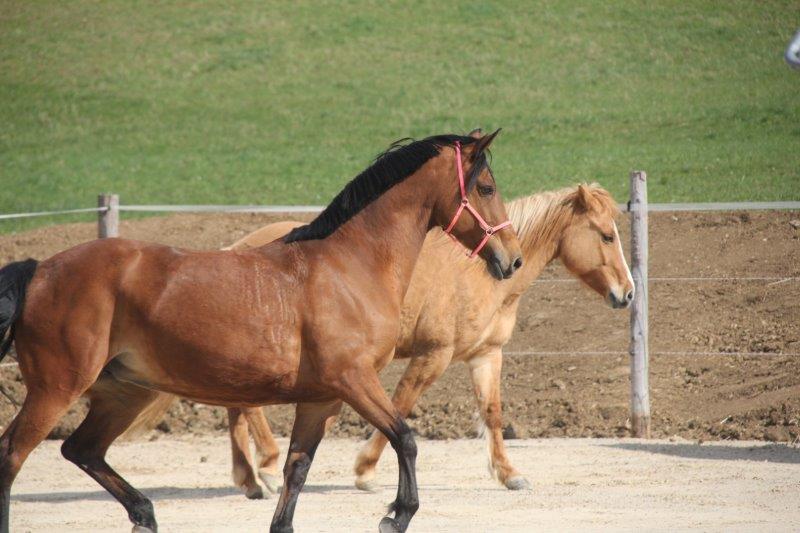
Im Zweifelsfall mitlaufen 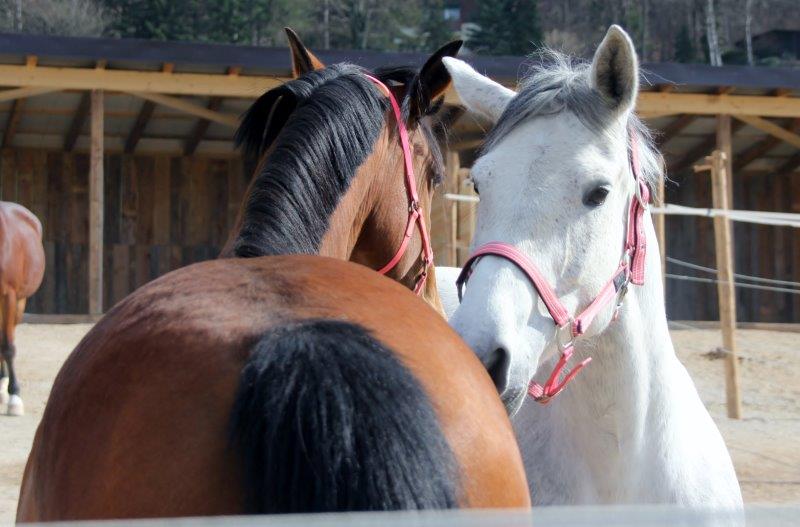
Lola lernt ihre neue Herde kennen